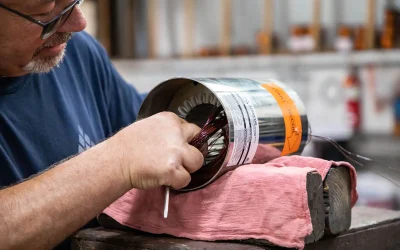Every successful space mission is the result of years of meticulous planning, rigorous engineering, and countless tests to ensure reliability and safety. While the dazzling images of rocket launches often capture public attention, the behind-the-scenes infrastructure that makes these achievements possible is just as crucial. For those seeking to understand the backbone of safe and reliable rocket launches, searching for a Rocket Engine Test Stand reveals the vital role these facilities play across the United States.
The Role of Test Stands in Rocketry
A Rocket Engine Test Stand is a highly specialized structure designed to securely hold and test rocket engines before they are integrated into launch vehicles. These facilities provide a controlled environment where engineers can simulate the extreme conditions of spaceflight, allowing them to measure performance, identify potential problems, and make critical adjustments well before liftoff.
Test stands are engineered to withstand the immense forces, high temperatures, and vibrations generated during engine firings. By replicating real-world launch conditions as closely as possible, they help ensure that engines will perform flawlessly during actual missions. This process is essential for both new engine designs and for verifying the reliability of engines before each launch.
Enhancing Safety Through Rigorous Testing
Safety is paramount in space exploration. A single malfunction can jeopardize an entire mission or endanger lives. Rocket Engine Test Stands contribute to safety in several key ways:
- Detection of Design Flaws: Early and repeated testing uncovers design weaknesses that might go unnoticed in computer simulations.
- Validation of Modifications: Any changes to engine components or manufacturing processes are thoroughly validated using test stands.
- Emergency Preparedness: Engineers can simulate failure modes, allowing them to develop contingency responses and improve engine resilience.
By identifying issues during ground tests, engineers can address them proactively, significantly reducing the risk of in-flight failures.
Supporting Innovation and Reliability
As the space industry evolves, so do the demands on rocket engines. Whether developing reusable engines for commercial launches or designing specialized propulsion systems for scientific missions, test stands provide the flexibility to support innovation.
Some ways test stands drive progress include:
- Accelerating Development Cycles: Rapid prototyping and iterative testing help bring new engine technologies to the launchpad faster.
- Supporting Diverse Missions: From heavy-lift rockets to small satellite launchers, test stands accommodate a wide range of engine sizes and thrust levels.
- Enabling Reusability: With the growing emphasis on reusable launch systems, repeated engine firings on test stands verify durability and performance over multiple cycles.
Nationwide Impact
Across the United States, rocket engine test stands are found at government space centers, private launch facilities, and research institutions. Their presence ensures that every engine, regardless of its origin, is put through its paces before flight. This network of test facilities underpins the nation’s leadership in space exploration and commercial launch services.
Empowering Safer Space Missions
In summary, rocket engine test stands are indispensable to the safety and success of space missions in the United States. By providing a realistic and controlled environment for engine validation, they allow engineers to refine performance, verify reliability, and prevent costly or dangerous failures. As the drive for innovation continues, these test stands will remain at the heart of America’s space endeavors, quietly powering safer missions to new frontiers.


